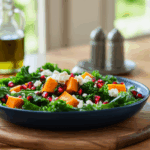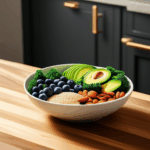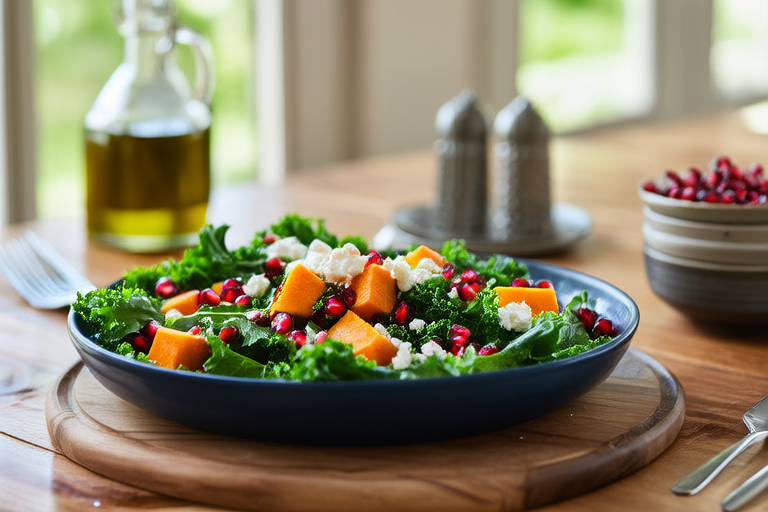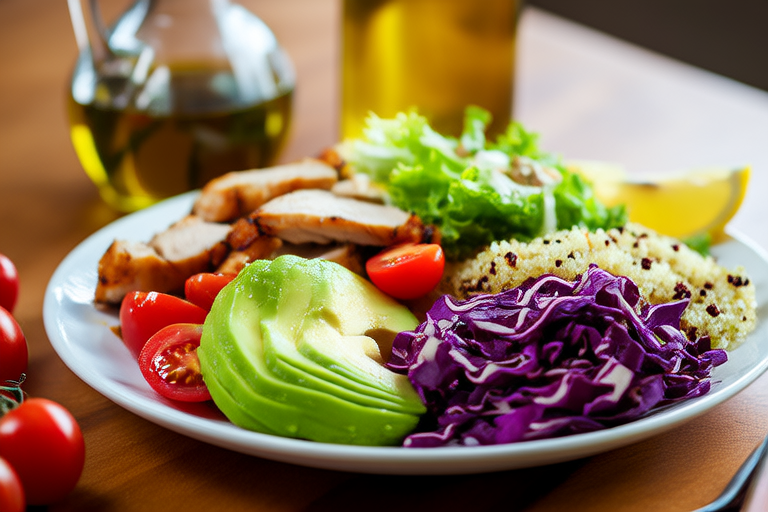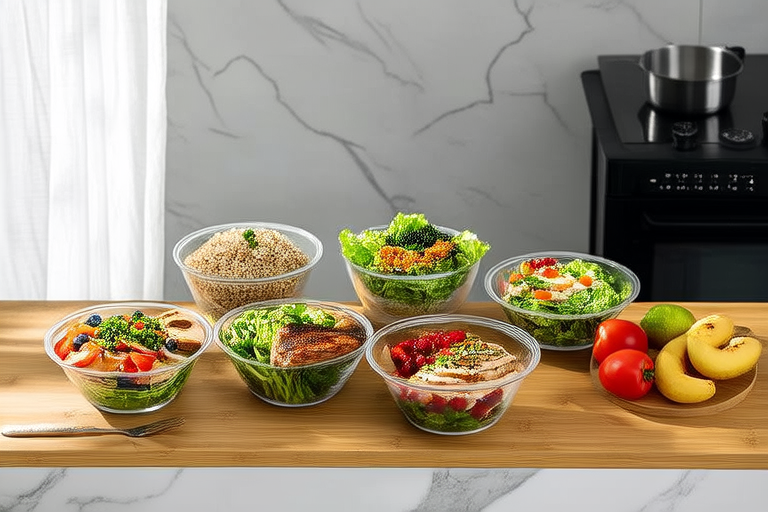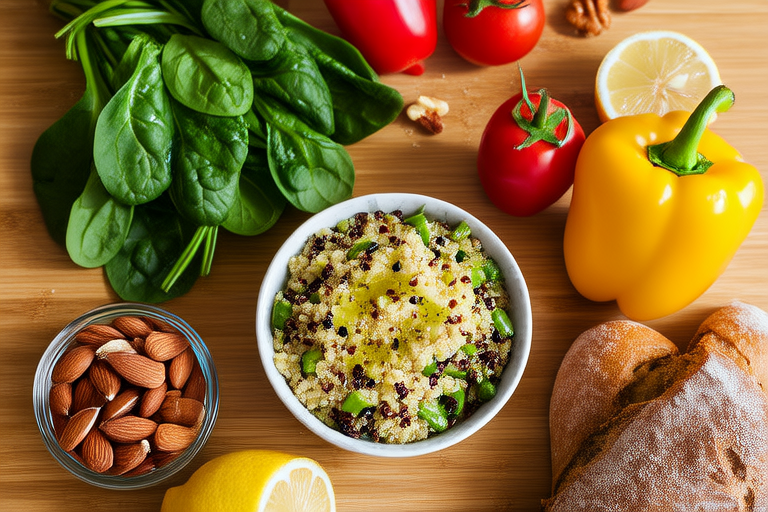The Importance of Wholesome Recipes in Maintaining a Healthy Lifestyle
Wholesome recipes play a crucial role in maintaining a healthy lifestyle. They not only provide essential nutrients but also help in preventing various diseases. A balanced diet consisting of nutritious meals is vital for overall health and well-being. In this article, we will discuss the significance of wholesome recipes, the benefits of whole foods and plant-based options, and provide you with delicious and nutritious meal ideas for breakfast, lunch, dinner, and snacks.
The Role of Wholesome Recipes in a Healthy Lifestyle
Eating wholesome and nutritious meals is essential for maintaining a healthy lifestyle. A well-balanced diet provides the body with the necessary vitamins, minerals, and antioxidants required for optimal functioning. Whole foods, which are minimally processed and free from additives, offer numerous health benefits. Incorporating whole foods into your daily meals can help improve digestion, boost energy levels, and support weight management.
Plant-based options, such as fruits, vegetables, legumes, and whole grains, are rich in fiber, vitamins, and antioxidants. These nutrients help protect against chronic diseases like heart disease, diabetes, and certain types of cancer. By preparing wholesome meals at home, you can control the quality and quantity of ingredients used, ensuring that you consume a balanced and nutritious diet.
Preparing Delicious and Nutritious Meals at Home
Preparing wholesome and nutritious meals at home is easier than it may seem. With a little planning and creativity, you can create delicious and satisfying dishes that are packed with essential nutrients. Here are some tips to help you get started:
- Plan your meals: Planning your meals ahead of time can help you save time and money. It also ensures that you have all the necessary ingredients on hand.
- Use fresh ingredients: Fresh fruits, vegetables, and herbs add flavor and nutrition to your meals. Whenever possible, choose organic produce to avoid pesticides and other harmful chemicals.
- Incorporate whole grains: Whole grains, such as brown rice, quinoa, and oats, are excellent sources of fiber and other essential nutrients. They can be used in a variety of dishes, including salads, soups, and side dishes.
- Add lean proteins: Lean proteins, such as chicken, fish, tofu, and beans, are important for muscle repair and growth. They can be added to salads, stir-fries, and casseroles.
- Balance flavors: Experiment with different herbs, spices, and cooking methods to enhance the flavor of your meals. This will make your dishes more enjoyable and encourage you to eat healthier.
Meal Ideas for Breakfast, Lunch, Dinner, and Snacks
Breakfast Ideas
Starting your day with a nutritious breakfast is essential for providing your body with the energy it needs to function properly. Here are some delicious and wholesome breakfast ideas:
- Acai Bowl: Blend frozen acai berries with bananas, spinach, and almond milk. Top with granola, chia seeds, and fresh fruit. Acai berries are rich in antioxidants, while chia seeds are an excellent source of omega-3 fatty acids and fiber.
- Overnight Oats: Mix rolled oats, almond milk, and a scoop of protein powder in a jar. Let it sit overnight in the refrigerator. In the morning, top with sliced almonds, fresh fruit, and a drizzle of honey. Rolled oats are high in fiber and can help regulate blood sugar levels.
- Vegetable Frittata: Whisk eggs with chopped spinach, tomatoes, and onions. Pour into a greased skillet and cook until set. Serve with a side of whole-grain toast. Eggs are a great source of protein, while spinach provides iron and vitamin K.
Lunch Ideas
A healthy lunch should provide sustained energy throughout the afternoon. Here are some nutritious and tasty lunch ideas:
- Quinoa Salad: Cook quinoa according to package instructions. Toss with cherry tomatoes, cucumber, red onion, feta cheese, and olive oil. Quinoa is a complete protein and contains all nine essential amino acids.
- Grilled Chicken Wrap: Grill a chicken breast and slice it. Place the chicken in a whole-grain tortilla with lettuce, avocado, and salsa. Wraps are a convenient way to pack a nutritious lunch.
- Turkey and Avocado Sandwich: Spread mashed avocado on whole-grain bread. Add slices of turkey, lettuce, tomato, and mustard. Avocados are rich in healthy fats and can help lower cholesterol levels.
Dinner Ideas
A healthy dinner should be filling and satisfying without being overly heavy. Here are some wholesome dinner ideas:
- Baked Salmon: Season salmon fillets with lemon juice, garlic, and dill. Bake in the oven until cooked through. Serve with roasted asparagus and quinoa. Salmon is an excellent source of omega-3 fatty acids, which are beneficial for heart health.
- Stuffed Bell Peppers: Remove the tops of bell peppers and hollow out the insides. Fill with a mixture of ground turkey, rice, black beans, corn, and spices. Bake until tender. Bell peppers are rich in vitamin C and antioxidants.
- Beef and Broccoli Stir-Fry: Stir-fry strips of beef with broccoli florets, carrots, and bell peppers. Serve over brown rice. Beef is a good source of protein and iron, while broccoli provides vitamin C and fiber.
Snack Ideas
Healthy snacks can help keep your energy levels up between meals. Here are some nutritious snack ideas:
- Hummus and Veggie Sticks: Serve hummus with carrot sticks, celery, and bell pepper slices. Hummus is made from chickpeas, which are rich in protein and fiber.
- Apple Slices with Peanut Butter: Slice an apple and spread peanut butter on each slice. Apples are rich in fiber and antioxidants, while peanut butter provides healthy fats and protein.
- Greek Yogurt with Berries: Top Greek yogurt with fresh berries and a sprinkle of granola. Greek yogurt is high in protein and probiotics, which are beneficial for gut health.
Key Ingredients for Health Benefits
When preparing wholesome meals, it’s important to include key ingredients that promote health benefits. Here are some examples:
- Leafy Greens: Leafy greens, such as spinach, kale, and Swiss chard, are rich in vitamins, minerals, and antioxidants. They are low in calories and can be added to salads, smoothies, and stir-fries.
- Fruits: Fruits are a great source of vitamins, minerals, and fiber. They can be eaten as a snack, added to smoothies, or used as toppings for yogurt and oatmeal.
- Legumes: Legumes, such as lentils, chickpeas, and black beans, are excellent sources of protein and fiber. They can be added to soups, stews, and salads.
- Nuts and Seeds: Nuts and seeds are rich in healthy fats, protein, and fiber. They can be eaten as a snack, added to salads, or used as toppings for yogurt and oatmeal.
- Whole Grains: Whole grains, such as brown rice, quinoa, and oats, are excellent sources of fiber and other essential nutrients. They can be used in a variety of dishes, including salads, soups, and side dishes.
Benefits of Whole Foods and Plant-Based Options
Incorporating whole foods and plant-based options into your diet can provide numerous health benefits. Whole foods are minimally processed and free from additives, making them an excellent choice for those looking to improve their health. Plant-based options, such as fruits, vegetables, legumes, and whole grains, are rich in fiber, vitamins, and antioxidants. These nutrients help protect against chronic diseases like heart disease, diabetes, and certain types of cancer.
Eating a plant-based diet has been shown to reduce the risk of obesity, hypertension, and type 2 diabetes. It can also improve cholesterol levels and lower the risk of cardiovascular disease. By incorporating more whole foods and plant-based options into your diet, you can improve your overall health and well-being.
Conclusion
Wholesome recipes are essential for maintaining a healthy lifestyle. By preparing nutritious and delicious meals at home, you can ensure that you are consuming a balanced and varied diet. Incorporating key ingredients that promote health benefits, such as leafy greens, fruits, legumes, nuts and seeds, and whole grains, can help improve your overall health and well-being.
We hope you found these meal ideas and tips helpful. We encourage you to experiment with these recipes to enjoy both taste and well-being. By incorporating more whole foods and plant-based options into your diet, you can improve your health and live a happier, more fulfilling life.



